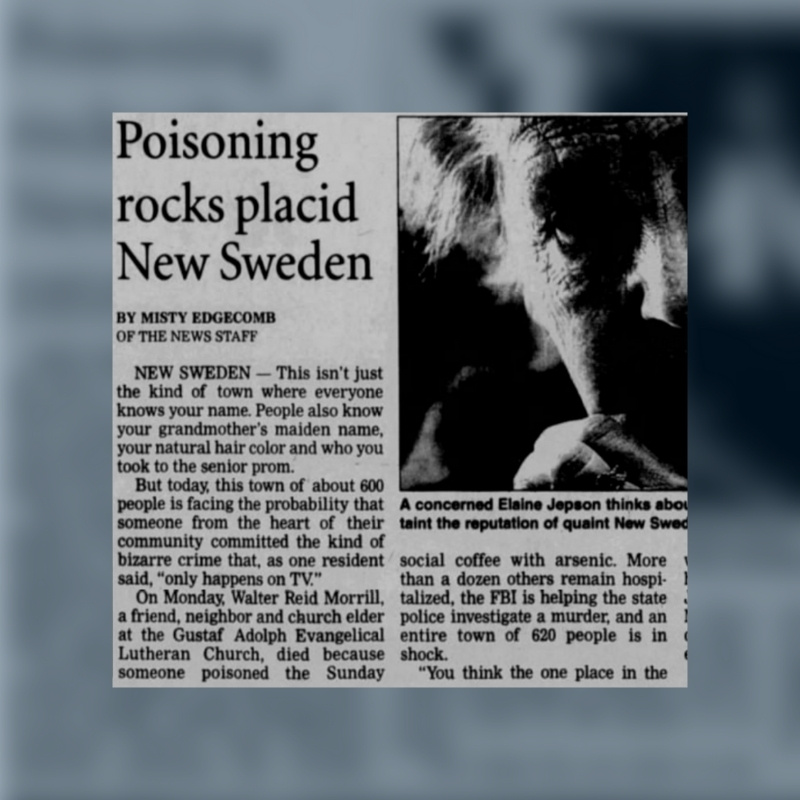It was April 27, 2003, a quiet Sunday morning, and Walter Reid Morrill slid down the row of his usual dark stained wooden pew at Gustaf Adolf Lutheran Church in New Sweden, Maine. It was still chilly in Northern Maine, but the sunshine peaked between clouds and through the lancet-arched windows of the church, casting shadows on the faces of his fellow parishioners, his neighbors, as they all rose from their seats and made their way to the fellowship hall for morning refreshments.
One face was missing among the fifty or so people in the congregation though, a man named Daniel Bondeson. No one seemed to remark about his absence. Maybe he was taking it easy that morning, having himself a Sunday at home after attending the church bake sale a day earlier. They were raising money for a new furnace, because we know that a furnace has to work harder in The County, and theirs was due for replacing. Daniel Bondeson wasn’t on the church council anymore, but he did his part to get the church closer to their goal one brownie, one quarter at a time. But on April 23, 2003, Danny wasn’t at church.
Reid heard there were leftovers from the bake sale the day before — the perfect pairing for the strong Swedish coffee always served in the fellowship hall. What they didn’t know, that morning of April 23, 2003, was that their strong Swedish coffee was tainted. And one of their own was responsible for what would become one of the largest intentional mass poisonings in modern medical history, using a substance that was known all-to well among the small community of potato farmers.
This is the case of The New Sweden Parishioner Poisonings. Press play for the full story and find this episode on your favorite podcast platform.
